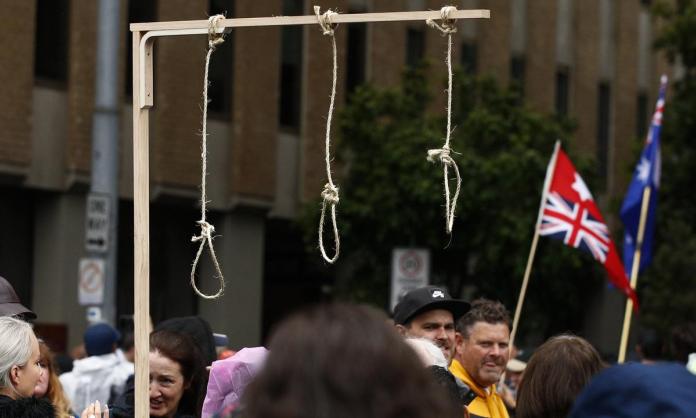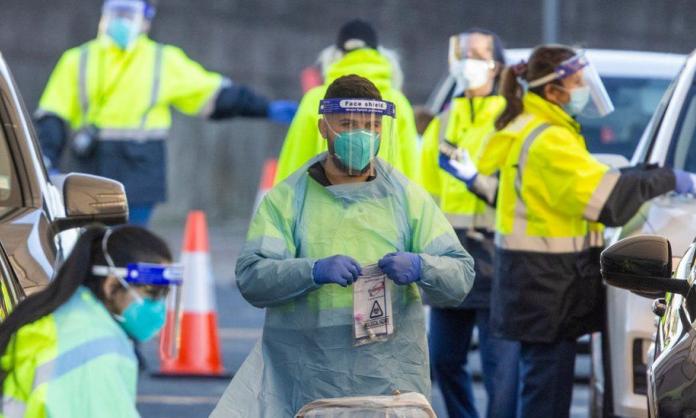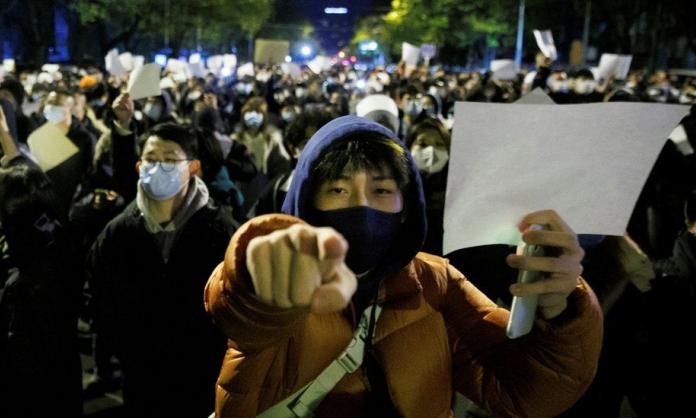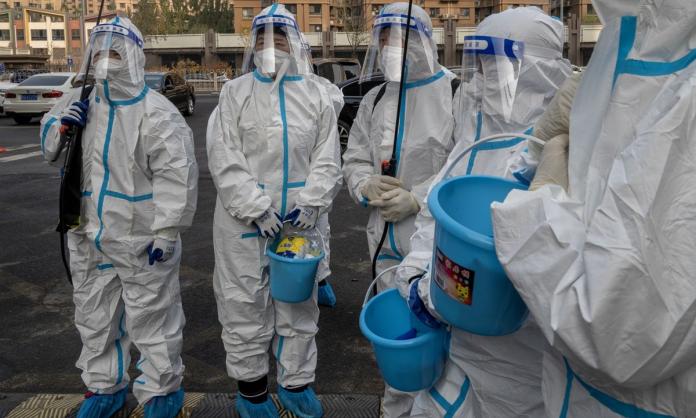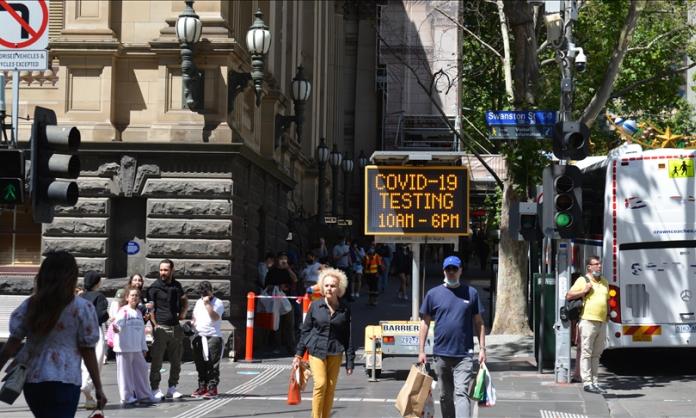“A car has kind of pulled up, then reversed ... then lined up the worker and ... run them over”—this was the eyewitness account broadcast on Melbourne radio station 3AW after a shocking attack on a COVID-19 testing site attendant last month. The hit-and-run left the worker hospitalised, and was one of two separate assaults on testing staff in Melbourne that day. These attacks alone should outrage anyone concerned with public health and workplace safety. Unfortunately however, they are far from isolated examples.
Recent weeks have seen a barrage of assaults on frontline workers, clearly motivated by hostility to public health measures. Workers have been harassed and attacked for asking customers to comply with QR code rules, vaccination requirements and mask mandates. In one horrifying instance, a staff member at a Melbourne Dymocks store was pushed down an escalator and knocked unconscious while checking vaccination certificates. Earlier that day an employee at the same store had been shoved out of the way by a customer refusing to check in via QR code, another staff member had been slapped in the face, and only hours afterwards a fourth worker was "tackled" by an indignant shopper. According to researchers at the Australian National University and the University of Sydney, a majority of retail workers have reported an increase in customer aggression since the beginning of the pandemic.
The threat extends well beyond the retail industry. Recently a brick was thrown through the window of a Melbourne cafe, accompanied by a note which read “do what Daniel Andrews says and we will burn your shop down and kill you”. Two days later, a bus driver was attacked and hospitalised in regional Victoria after asking a passenger to wear a mask. In the regional Queensland city of Toowoomba, threatening letters have been left on the windscreens of hospital workers' cars, warning that medical professionals "who inject and uphold the narrative ... [of] the Covid hoax" will face the death penalty.
The attacks come in the context of a mass right-wing street movement that places individual “freedom” above public health. A small but highly active minority of Australians has mobilised consistently in opposition to lockdowns, mandates and vaccine passes. In every state, the so-called “freedom” movement has brought together anti-vaxxers, fringe libertarians, representatives of the Liberal Party, One Nation and the United Australia Party, and open neo-Nazis. The movement has received encouragement from sections of the business community and mainstream media that have argued from the start of the pandemic that any restrictions on the normal functioning of capitalism for the sake of public health should be opposed.
Even when they’re not attacking individual workers, the “freedom” movement glorifies violence. Protesters have staged mock executions of politicians associated with the implementation of public health measures. In states like Victoria and Queensland where Labor Premiers have enforced various restrictions to minimise the spread of COVID-19, chants of “hang Dan” (referring to Victorian Premier Daniel Andrews) or “hang the bitch” (Queensland Premier Annastacia Palaszczuk) are familiar refrains at weekly demonstrations. When asked about such violent language, Prime Minister Scott Morrison effectively gave a wink and a nod to the protesters, saying “many people are feeling frustrated” and that it’s “time for governments to get out of people’s lives”.
It’s no surprise that a handful of individuals have taken this as a signal to turn the violent rhetoric and threats into reality. One protester was recently charged with incitement after encouraging Victorians to bring guns to a demonstration and assassinate Daniel Andrews. Western Australia’s Labor Premier Mark McGowan was forced to close his electorate office after a constituent drove a British Army tank into the street outside and brandished a pickaxe. Participants in the “freedom” movement have posted the home addresses of Labor parliamentarians and public health officials on social media, while thousands of threats of physical and sexual violence have been leveled against politicians, their staffers and their families.
The emboldened far right has also directed physical violence at individual progressive activists. The daughter of Victoria’s Animal Justice Party MP Andy Meddick was assaulted in the street while spray-painting over anti-vax propaganda in Melbourne’s north. In another troubling incident, skinheads clad in Eureka flag t-shirts targeted the home of a prominent anti-racist activist in Sydney. The far right, it seems, are using the momentum created by the “freedom” movement to launch a broader campaign of intimidation against the left.
This sort of violent intimidation is typical of far-right movements. It emerges when a radicalising minority feels simultaneously emboldened and frustrated by the actions of the mainstream right.
On the one hand, traditional conservatives are feeding anti-vax sentiment. They lend legitimacy to large street mobilisations that generate a sense of righteousness among extremists. On the other hand, despite the occasional dog whistle to protesters from the likes of Scott Morrison, the Australian ruling class as a whole does generally support vaccination as a means of dealing with the pandemic without the need for more lockdowns or other measures that might threaten their profits. On top of this, public support for health measures remains strong. The far-right anti-vax movement feels more and more confident to impose its views on society, but remains marginalised in reality. This helps to explain why some “freedom fighters” are lashing out through individual acts of violence and intimidation.
This radicalising dynamic is of particular concern in a context where openly neo-Nazi individuals and organizations are playing such a prominent role. Known far-right activists like Andy Nolch, Blair Cottrell and Harrison McLean have intervened into the “freedom” movement in an attempt to recruit a hardened core to fascistic groups like the National Socialist Network (NSN) and the Proud Boys. These groups are notorious for advocating, and at times for carrying out, violent attacks. In May this year, members of the NSN and the European Australian Movement allegedly assaulted a group of hikers who stumbled upon their white supremacist retreat in a Victorian state park. Australian neo-Nazi groups have proven connections to far-right terrorists worldwide, including the perpetrator of the horrific 2019 Christchurch mosque massacre.
All this reinforces the importance of building a broad, defiant movement in opposition to the far right. The “freedom” movement may decline in the short term as restrictions in NSW and other states are further lifted, but the coming months will be full of opportunities for them to build on existing gains. The introduction of childhood vaccination, the looming Federal election, and the spread of the Omicron variant are all potential triggers for a resurgence of the “freedom” movement’s mobilisations.
Anti-fascists have already taken the first steps in challenging the new far-right threat. On 20 November, rallies were held in cities around Australia in opposition to the “freedom” movement and its supporters in parliament. Further demonstrations, speakouts, and public forums since have helped cohere a layer of progressives committed to rebuilding the anti-fascist left in Australia. Activists have also established a website where frontline workers can report harassment they face from anti-vaxxers. The next major mobilisation by anti-fascists will take place on Saturday 22 January, to coincide with the “freedom” movement’s next global day of action.
Anti-fascist groups are active in Melbourne, Sydney, Brisbane, Adelaide, Perth, Canberra and Hobart.




